Over the past year, people started finding tiny cranes everywhere in the WellSpan Philhaven hospital building in Mount Gretna.
The colorful origami birds – intricately folded paper creations no bigger than a quarter – were strewn on windowsills and tucked into planters. Therapists, housekeepers and others came upon the little cranes sitting outside a door or perched on a chair. Kids being treated in Philhaven’s child and adolescent inpatient unit discovered larger origami in the shape of a butterfly, a dragon, an elephant or a turtle in the hospital’s gym when they went to exercise.
Therapist Marisol Alonso says, “People would be walking and say, ‘Oh my gosh, there’s another origami! Where is this coming from?’”
Lia Landefeld, a patient on Philhaven’s extended acute unit, was behind the stealth joy project.
The 25-year-old learned how to fold crane origami from another patient during her nine-month stay in Philhaven and soon found creating all kinds of origami – and making all kinds of art – to be a valuable part of her treatment for depression.
When she was discharged in May, Lia made an origami for every team member at the hospital and wrote a thank-you card to each department. Security guards, housekeepers, therapists, pharmacists, food service workers and others each got their own personalized origami butterfly, a token of her gratitude and a fitting symbol for Lia’s transformation during her time at Philhaven.
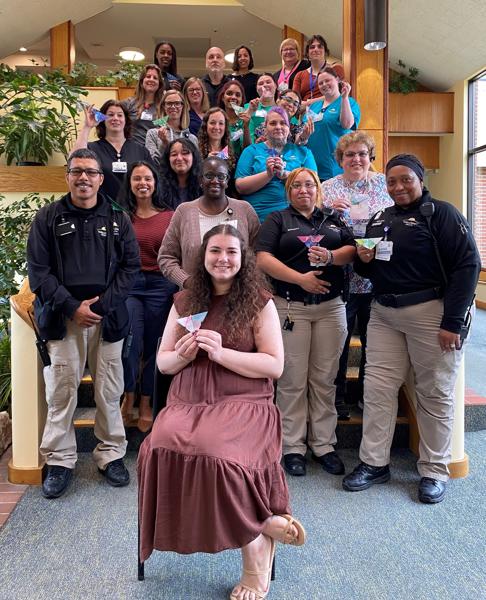
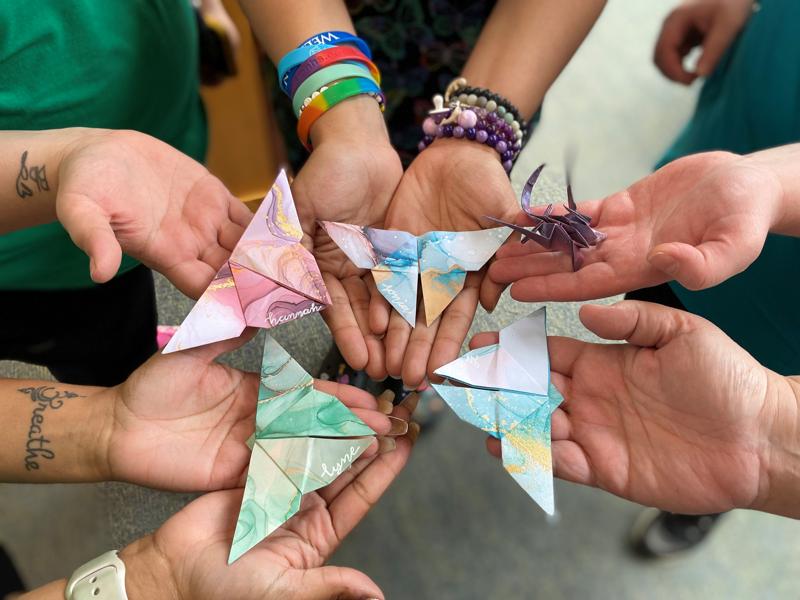
Lia and some of the team members holding their origami butterflies personalized with their names. Closeup at right, includes an origami squirrel Lia made for a team member.
“Who I was coming into Philhaven and who I am now – I am just a totally different person,” Lia says. “I have to give myself credit because I did the work, but I have to thank the people who were there to support me and see me through it.”
“When I got to Philhaven, there were all these people who, for whatever reason, said that they saw something in me,” she says. “They believed in me, even when I didn’t believe in myself, and I think that made all the difference.”
Lia’s journey
Lia has struggled with depression and thoughts of self-harm for much of her life. She knew she needed care – and knew she needed to open up and be receptive to that care – when she came to Philhaven’s 40-bed extended acute unit, which provides intensive, inpatient psychiatric and behavioral health care for adults with complex mental health needs.
Her first day in the hospital, she was surprised to see that patients had decorated the doors of their rooms with drawings and photos of their families and pets. Lia, who has always liked creating art, started making construction paper seasonal decorations for the unit: snowflakes for winter, paper hearts for Valentine’s Day, colorful eggs at Eastertime.
After Lia learned how to do origami from the other patient, the duo regularly left cranes throughout the hospital and Lia continued the practice after the other patient was discharged. Lia also learned how to fold different origami she shared with others.
Artwork permeated Lia’s hospitalization. Marisol, her therapist, asked Lia to create drawings of different stages of her life to help with her therapy. Lia also often folded birds while she was talking to Marisol. The activities made the conversation flow more freely.
“She used origami as a distraction to keep her in the zone to help her talk about difficult things,” Marisol says. “It’s easier to talk about hard things when your hands are occupied.”
From paper to paint
About halfway through her hospital stay, maintenance team members repainted some walls in her unit and Lia asked why one wall had not been painted. A nurse said, “You should do a mural there.”
A week later, after getting approval from the hospital, she was creating the first of what would become three murals: a Dr. Seuss-themed scene on one wall, an underwater tableau on another wall and an array of trees on a third wall. Painting the murals was almost a meditative practice that allowed her to think and continue to heal, along with the other treatments she was receiving, Marisol says, with the treatment team supporting her journey.
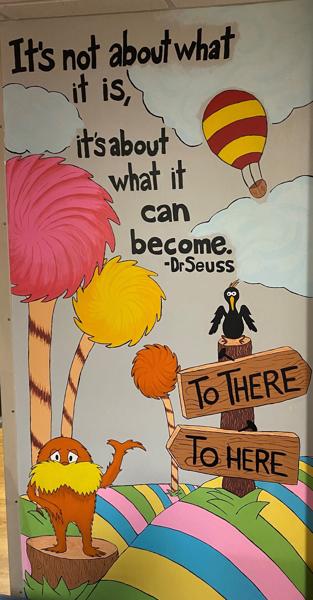
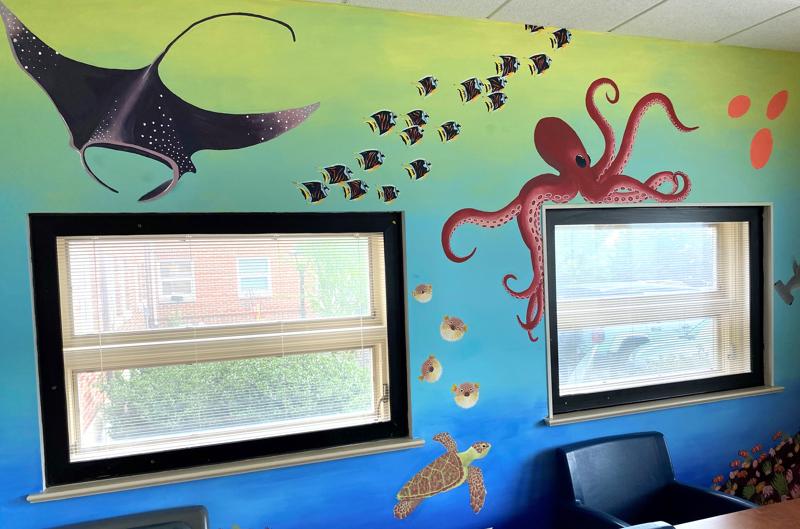
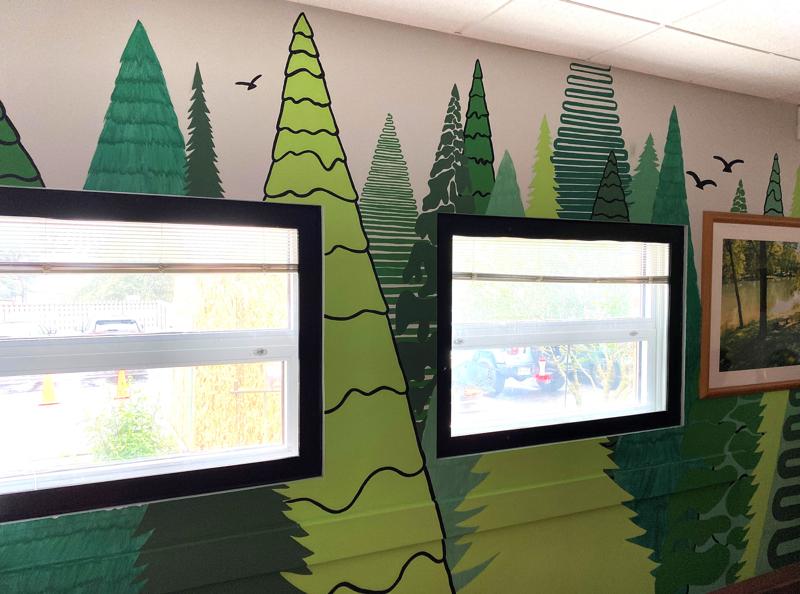
The murals Lia created in the extended acute unit.
“We try to meet patients where they are at, and if they express an interest in something, we try to engage with those interests,” Marisol says.
“It really did help me therapeutically,” Lia says. “Art was something I had kind of left behind and I didn’t realize how much I missed it. I was connecting with a part of myself that I kind of forgot about.”
Leaving origami around the hospital also helped Lia.
“Knowing someone else was finding joy in what I was doing was helping me feel good,” she says. “There is a quote from one of the books I read at that time that said in loving others, we learn to love ourselves. That really stuck with me.”
Being herself
Marisol says the art that Lia created allowed her to see the positive impact she has on the world. In fact, Lia is considering painting murals as a side business as she contemplates the next steps in her life since her discharge. She is, she says, “creating a space that I can be myself in – even though I’m getting to know exactly who this new version of myself is.”
Marisol says it is rewarding to see Lia evolve.
“She is a beautiful being, inside and outside, and she always had it within her to find the strength to move on and be in control of her life,” she says. “I’m happy to see where she’s at today. She really touched a lot of people here.”
Tags:


